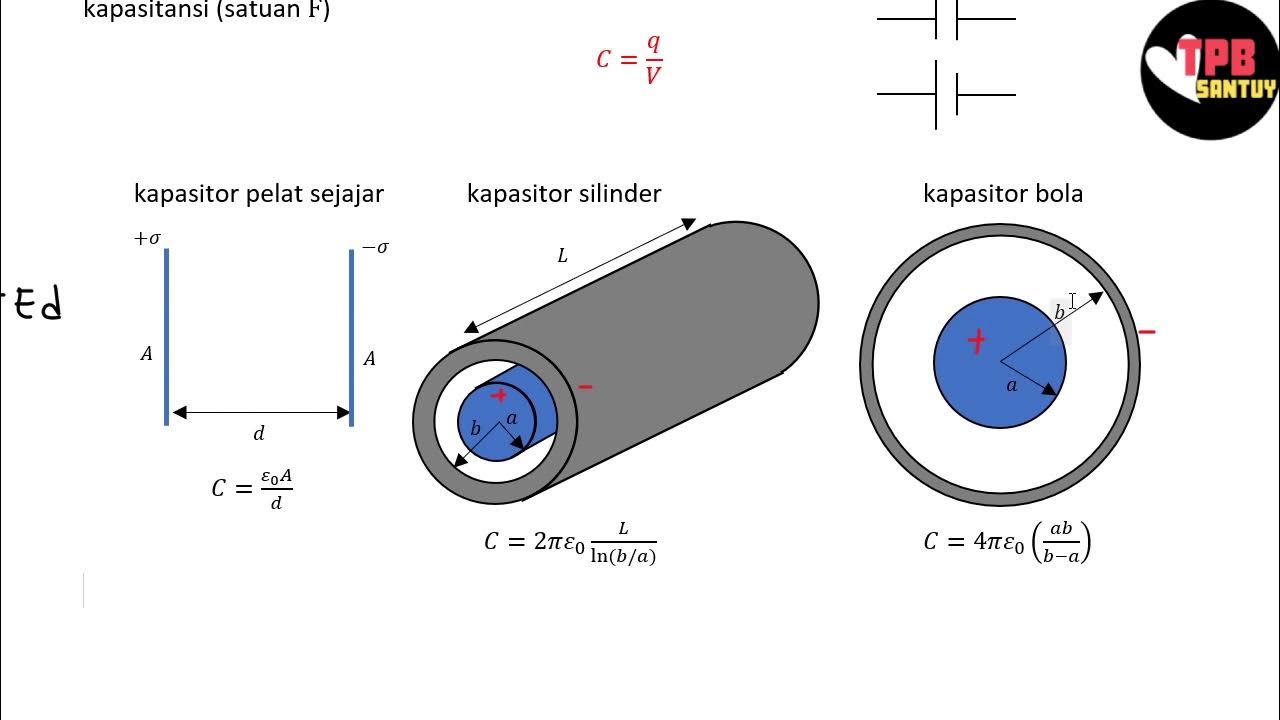Elektronika Dasar 005 Capasitor 01 Universitas Jember
Summary
TLDRThis video provides an in-depth explanation of capacitors, covering various types such as paper, electrolytic (Elco), mica, and others, along with their symbols and values. It also touches on how capacitors are read and understood, including microfarads, nanofarads, and picofarads, and discusses the significance of color coding and voltage ratings. The script further elaborates on the internal structure of capacitors, explaining how they work similarly to batteries with the use of dielectric media. Ideal for anyone seeking a deeper understanding of electronic components, particularly capacitors.
Takeaways
- 😀 Capacitors are essential electronic components used to store electrical energy.
- 😀 Capacitors come in various types, such as paper, electrolytic, mica, and tantalum, each with distinct dielectric materials.
- 😀 Electrolytic capacitors (Elco) use electrolytic solutions as dielectric material and are commonly used in larger capacities.
- 😀 The most common symbols for capacitors are non-polarized (no positive or negative terminal) and polarized (with marked positive and negative terminals).
- 😀 The unit of capacitance is the farad (F), but smaller units such as microfarads (µF), nanofarads (nF), and picofarads (pF) are more commonly used.
- 😀 The capacitance value of a capacitor can be read using printed numbers or codes, such as 100 µF or 10 + 0.
- 😀 Capacitors can have tolerance values, indicated by color bands, like 10% or 20%, which represent variations from the specified capacitance value.
- 😀 Variable capacitors allow for adjustable capacitance, typically used in tuning circuits like radios.
- 😀 The dielectric material in a capacitor determines its capacitance and energy storage ability, with common materials being paper, mica, and electrolytic solutions.
- 😀 Capacitors work by storing electrical energy on two conductive plates separated by a dielectric material, with one plate accumulating positive charge and the other negative.
- 😀 Capacitors are widely used for various functions, such as filtering signals, energy storage, and regulating voltage in electronic circuits.
Q & A
What is a capacitor, and how is it commonly referred to?
-A capacitor, also commonly referred to as a condenser, is an electronic component used to store and release electrical energy. It comes in various forms, with different dielectric materials.
What are the different types of capacitors mentioned in the video?
-The video mentions several types of capacitors, including paper capacitors (with paper as the dielectric), electrolytic capacitors (with electrolyte as the dielectric), mica capacitors, polyester capacitors, and variable capacitors, among others.
What are the characteristics of an electrolytic capacitor?
-An electrolytic capacitor, commonly called 'Elco,' has an electrolyte as its dielectric material. It usually has a polar nature, with one terminal marked as positive and the other as negative.
What is a variable capacitor, and how is it adjusted?
-A variable capacitor, also known as a variac or trimmer capacitor, allows its capacitance value to be adjusted manually, typically using a screwdriver.
What does the symbol for a capacitor look like, and how does it differ from other components?
-The symbol for a capacitor is a simple two parallel lines. It can either represent a non-polarized capacitor (like paper capacitors) or a polarized capacitor (like electrolytic capacitors), where the symbol may include a '+' and '−' to indicate polarity.
How are the capacitance values of capacitors measured, and what units are used?
-Capacitance is measured in farads (F). However, due to the large size of a farad, smaller units are often used, such as microfarads (µF), nanofarads (nF), and picofarads (pF). A microfarad is 1/1,000,000 of a farad, a nanofarad is 1/1,000 of a microfarad, and a picofarad is 1/1,000 of a nanofarad.
How do you read the values on an electrolytic capacitor?
-On an electrolytic capacitor, the value is usually written directly, like '100µF 16V', meaning it has a capacitance of 100 microfarads and can withstand a maximum voltage of 16 volts. The '+' sign indicates the positive terminal.
What does the marking '105' on a capacitor represent?
-'105' on a capacitor indicates the capacitance value using a code. It means 10 followed by 5 zeros, which equals 1,000,000 picofarads, or 1 microfarad.
What are some of the different color codes used on capacitors, and how do you decode them?
-Capacitors often use color codes to represent values. For instance, brown means 1, black means 0, orange means 3, etc. The number of digits in the color code indicates the value, while the last color represents the multiplier, with common values in picofarads (pF), nanofarads (nF), or microfarads (µF).
What is the construction of a typical capacitor, and how does it work?
-A capacitor consists of two metal plates separated by a dielectric material. When voltage is applied, the plates store electrical charge. The dielectric material affects the capacitance by determining how much charge can be stored.
Outlines

This section is available to paid users only. Please upgrade to access this part.
Upgrade NowMindmap

This section is available to paid users only. Please upgrade to access this part.
Upgrade NowKeywords

This section is available to paid users only. Please upgrade to access this part.
Upgrade NowHighlights

This section is available to paid users only. Please upgrade to access this part.
Upgrade NowTranscripts

This section is available to paid users only. Please upgrade to access this part.
Upgrade NowBrowse More Related Video

Mengenal Komponen Elektronika Part#1-4 (Cuplikan), Belajar elektronika part1-4, by #asan

Elektronika Dasar 007 Capasitor 03 Universitas Jember

Prinsip Kapasitor | Kapasitor | Part 1 | Fisika Dasar

Beban Terfaktor (Ultimate Load) dan Kuat Rencana (Design Strength) Struktur Baja | Lightboard

Classification of Computers | Basic Computer Engineering RGPV B.Tech 1st Year

PELUANG KARTU BRIDGE‼️5 MENIT LANGSUNG PAHAM BANGET
5.0 / 5 (0 votes)